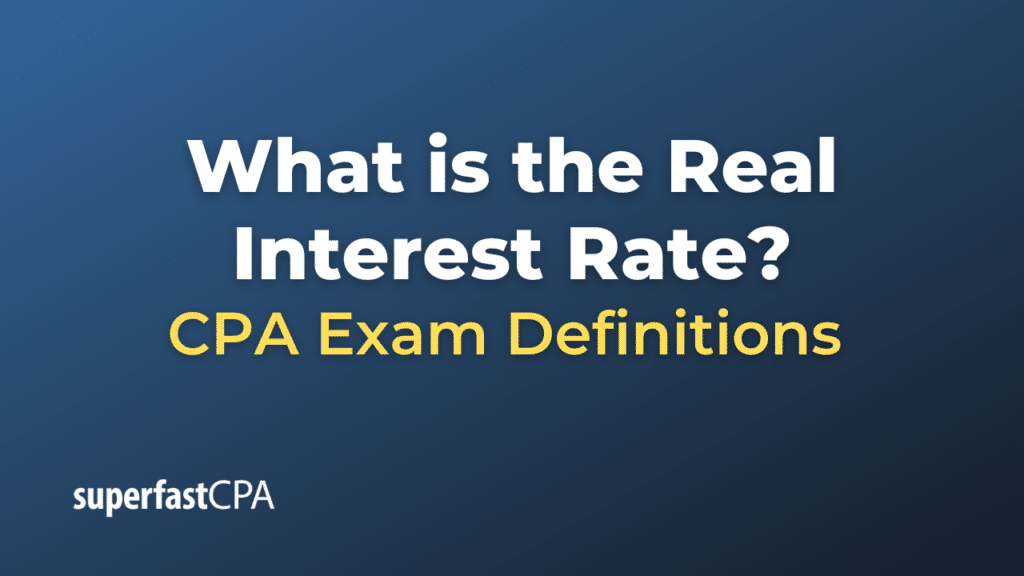Real Interest Rate
The real interest rate is the rate of interest an investor expects to receive after allowing for inflation. It’s the rate at which the purchasing power of an investment increases.
The real interest rate can be calculated using the formula:
Real Interest Rate = Nominal Interest Rate − Inflation Rate
Where:
- Nominal Interest Rate is the face value rate of interest without adjustment for inflation.
- Inflation Rate represents the percentage increase in the general price level over a period, typically a year.
The real interest rate is significant for both lenders and borrowers as it gives a clearer picture of the true cost of borrowing and the real yield on an investment. A positive real interest rate indicates that money lent or invested will grow in purchasing power, while a negative real interest rate suggests that the purchasing power will decline over time.
Example:
Let’s say you invest in a bond with a nominal interest rate (or yield) of 6%, and the inflation rate for the year is 3%.
Using the formula:
Real Interest Rate = 6% − 3% = 3%
Your real interest rate, or the rate at which your purchasing power increases, is 3%.
In this example, even though you earn a 6% return on your bond, the value of money has decreased by 3% due to inflation. As a result, in terms of actual purchasing power, your effective gain is only 3%.
Example of the Real Interest Rate
Let’s delve deeper into the concept of real interest rate with a more detailed example.
Imagine Sarah has $10,000 to invest. She finds a 1-year fixed deposit at her local bank that offers a 5% nominal interest rate. Sarah expects the inflation rate for the upcoming year to be 3%.
Calculating the Real Interest Rate:
Using the formula:
Real Interest Rate = Nominal Interest Rate − Inflation Rate
Real Interest Rate = 5% − 3% = 2%
So, the real interest rate is 2%.
Understanding the Impact:
- Nominal Gain: At the end of the year, Sarah will earn 5% on her $10,000 investment, which is $500. So, she will have a total of $10,500.
- Effect of Inflation: However, because of the 3% inflation, the purchasing power of her money decreases. If Sarah could buy a certain basket of goods for $10,000 at the start of the year, that same basket would now cost her $10,300 at the end of the year due to inflation.
- Real Gain: Considering the inflation-adjusted purchasing power, her real gain is the difference between her total amount and the inflation-adjusted initial investment: $10,500 – $10,300 = $200. This $200 gain on a $10,000 investment is effectively a 2% real return, which matches our earlier calculation.
In essence, while Sarah’s money has nominally grown by 5%, her actual purchasing power (or what she can buy with that money) has only increased by 2% after accounting for inflation. This example underscores the importance of considering inflation when evaluating the attractiveness of an investment. An investment with a high nominal return but also high inflation might end up providing less real value than one with a moderate nominal return in a low-inflation environment.













